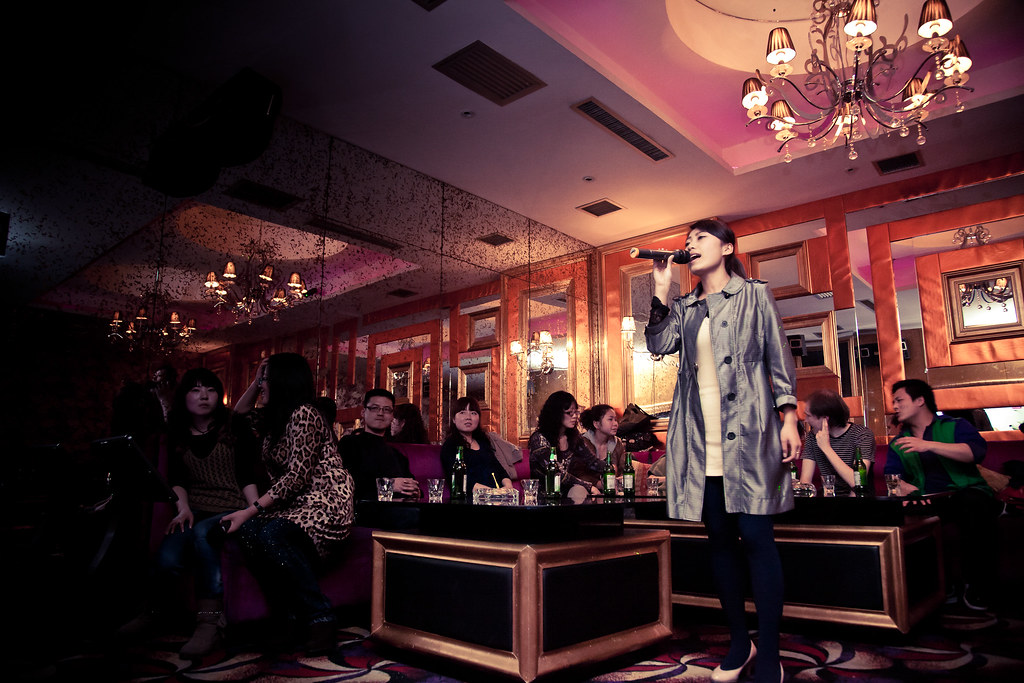
“KTV”? Karaoke TeleVision. Well, it’s just what the Chinese call “Karaoke.” It’s a huge past-time here. Some people take it very seriously too. I, personally, can’t sing for toffee so I usually refrain. Plus the beer is usually over-priced and over-watered. Anyway, occasionally for various festivals or holidays the owner of our school, Max, invites all the employees of the school out for a meal. On this occasion, lots of baijiu was consumed so someone thought it would be a good idea to follow up the meal with a trip to a KTV bar…

Starting out at the restaurant. All of the Chinese Teachers on this table.
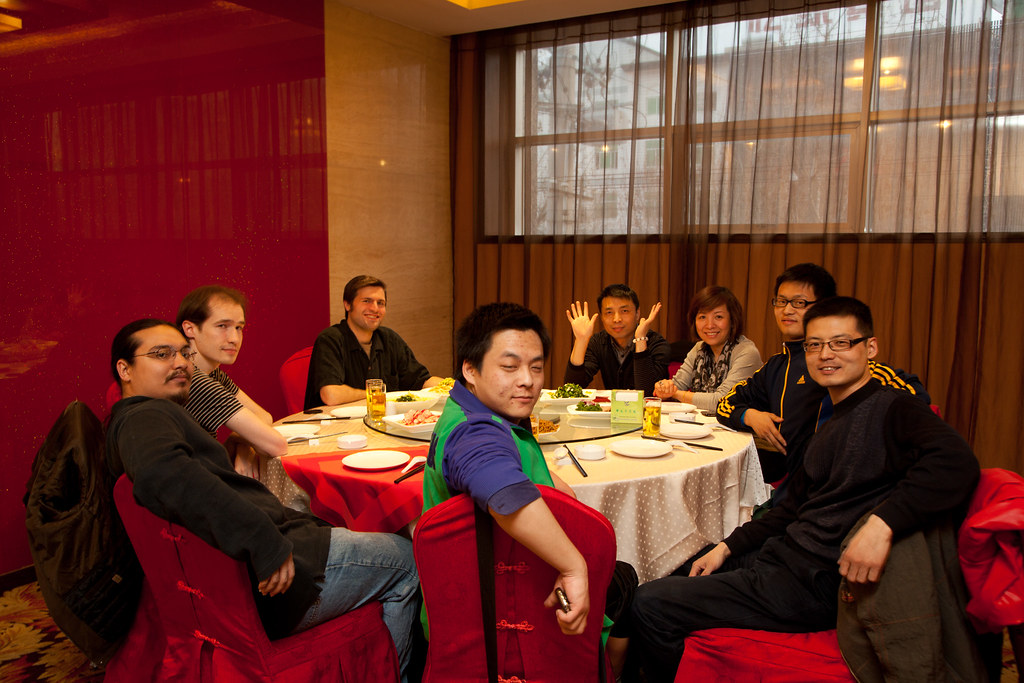
Too many people for one table, so we had a room with two tables. This table is full of everyone who basically isn’t a Chinese teacher. So, foreigners, managers, front-desk staff, etc. Interesting tidbit: most ‘posh’ restaurants in China don’t really have a main dining area. Instead, the restaurant is split into lots of different rooms.

Baijiu! Drinking is quite a big part of the culture in China. There are lots of customs, traditions and unwritten rules that could take up a blog post in themselves. Basically everyone keeps a shot next to them and individuals will then ‘toast’ one another for various reasons. Sometimes as a ‘thank’ or a mark of respect. Or…as part of a campaign to show who can drink the most. Everyone keeps loose tabs on how much everyone else has drunk, and it can sometimes feel a bit ‘high-school-ish’ with people complaining that person B has drunk less than person C, etc. Being able to hold your baijiu and still remain gentlemanly is an easy way to earn big respect in China. I will say that baijiu tolerance is totally different to that of beer. When I first came to China I was no heavyweight, but I could certainly hold my own in drinking beer. But, baijiu? When I first arrived; a few shots and I’d be acting like a loon. A few more shorts and I’d be sleeping. After nearly three years though, I’d say I’ve developed a taste for this 50% proof liquid of evil. For getting drunk, it’s definitely better than Chinese beer. Chinese beer is only 3.6%, and served in huge 600ml bottles. It takes too much of it to get drunk, usually resulting in a very full and bloated stomach / bladder. On the other hand, when you start drinking baijiu, you never know where the night will go. The aforementioned culture of one-up’ing combined with the alcoholic Dutch courage means before you know it you’re on a quest to drink the rest of the room under the table. On this particular occassion we ended up going through three bottles of very expensive 50-year baijiu.
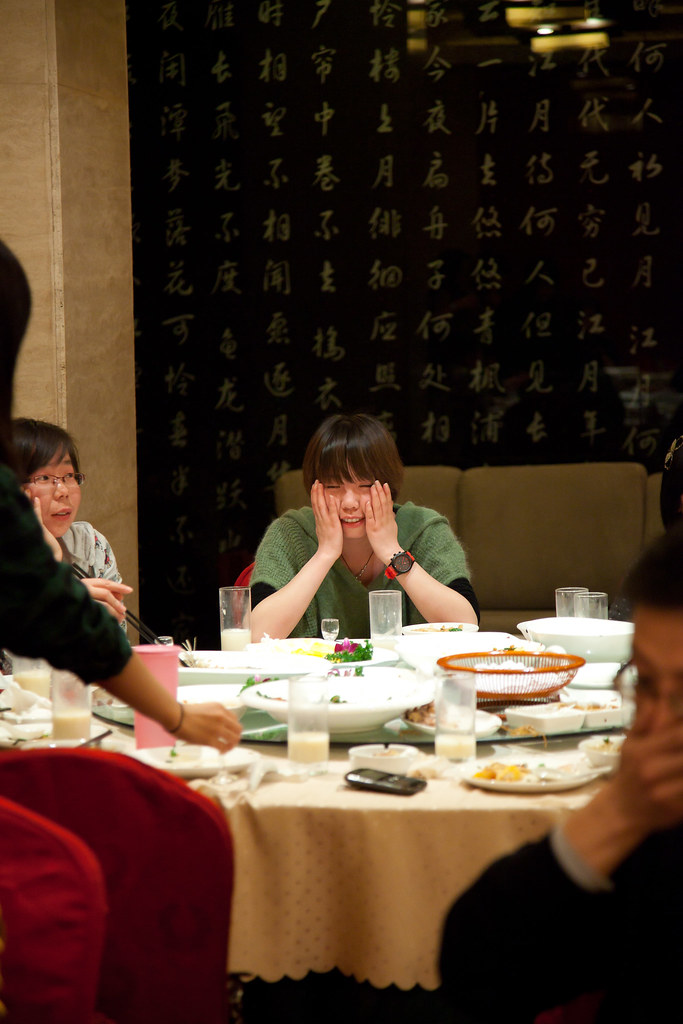
However, another interesting fact. A large portion of the population are seemingly alcohol intolerant. I’m not talking about being a ‘lightweight’ – I’m talking about a physical inability for their body to handle the alcohol. Lots of people will go very red-faced and dizzy after just one shot or half a glass of beer. One such person is Zeno. Here she’s seen after just one shot, looking not too great. Interestingly, the red-faced phenomenon also applies to the heavier drinkers. According to Wikipedia the phonomenon is known as ‘Alcohol Flush Reaction’ (click here to read more) it’s a good gauge on how hard-core the person you’re drinking with is. Another tidbit: when the foreigners are drinking alone in a restaurant, Chinese men will often come up to us and toast us. As I said before, it’s sometimes a mark of respect, sometimes an alpha-male chest thumping. As a result you end up drinking with lots of random Chinese dudes. From soldiers and police officers to computer programmers and politicians. You end up going shot-for-shot with a large sample of people. The variance in baijiu tolerance is great. Some of the ‘larger’ men can finish a litre bottle themselves and then get in their car and drive home. (Drink driving is quite a big problem in China.) Anyway… this is turning into a blog post on drinking in China… something I didn’t want…back to the subject at hand.

“Bottom’s up.” or “Gan bei!” in mandarin. Literally translated: “Dry glass!” If you ever find yourself drinking with a Chinese person, another piece of information that would come in handy would be the lower-glass rule: As a mark of respect to the person you’re clinking glasses with, you should try to put your glass slightly lower than the other person’s. Social hierarchy is a big part of Chinese culture, as such your boss / social higher will ‘accept’ your lower-glass as a sign of respect. However, if the two are equal they will often ‘fight’ or ‘jostle for position’ with their glasses. Each trying to get the lower glass as a sign of respect. Sometimes resulting in peoples’ glasses clinking way down near the floor.
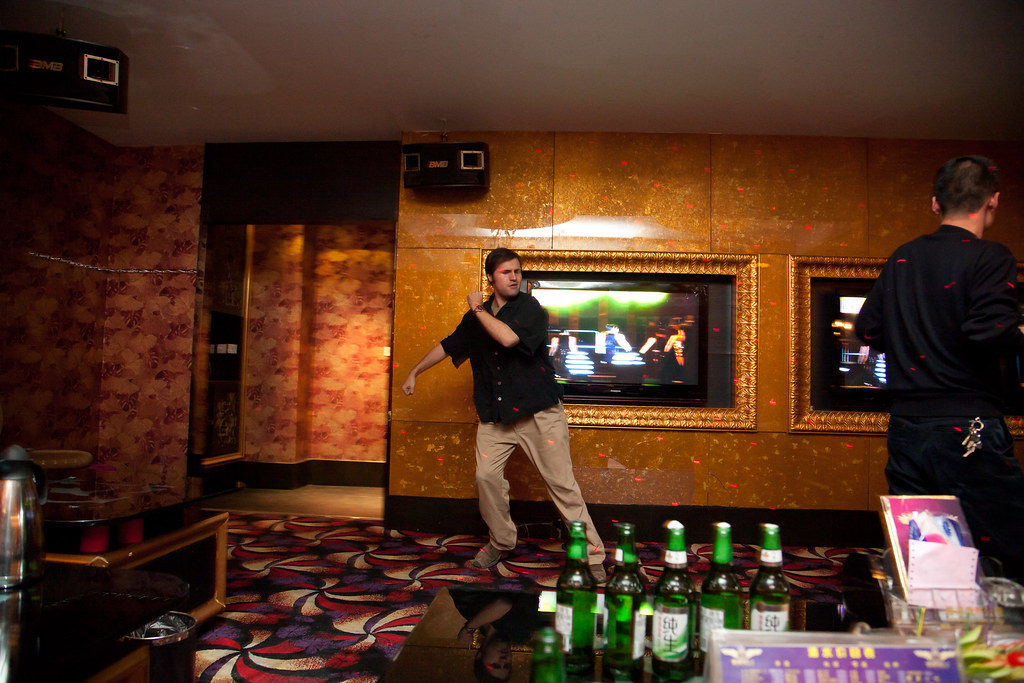
So, after the meal we headed to KTV. (In taxis… no drink-driving here!) The Chinese people que’d up their favourite playlists of songs. With no ability to join in the singing, us foreigners decided to aid the entertainment with some dancing.
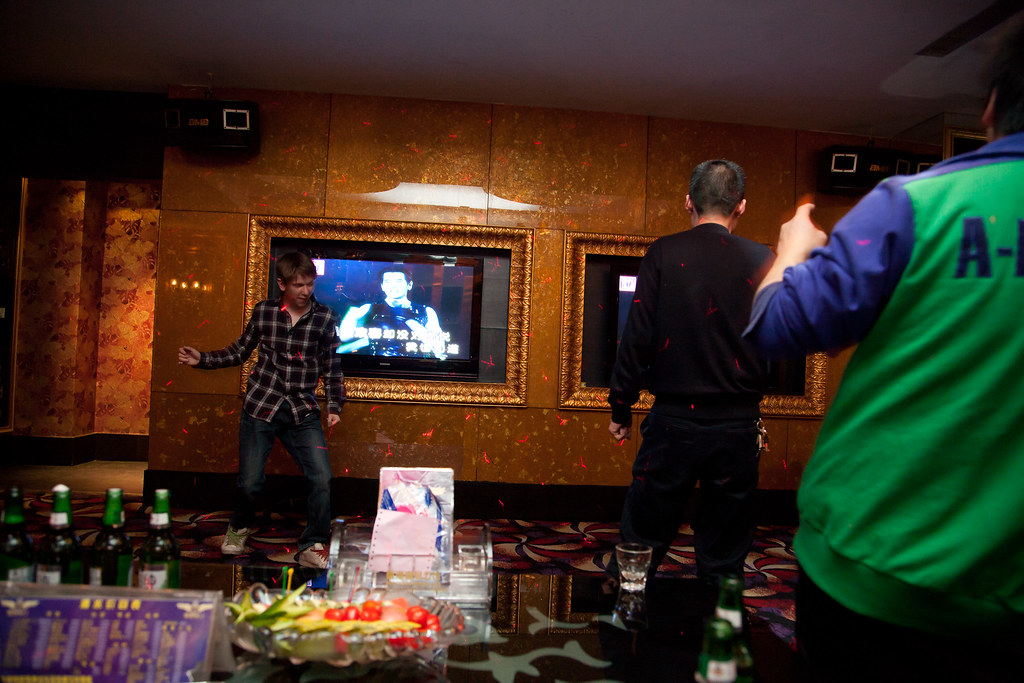
At first I thought the karaoke lounge’s use of two giant 52″ LCDs next to each other was a flagrant show of wealth. It turns out it’s so if one drunk person is dancing in front of one; you can still read the other. Genius.
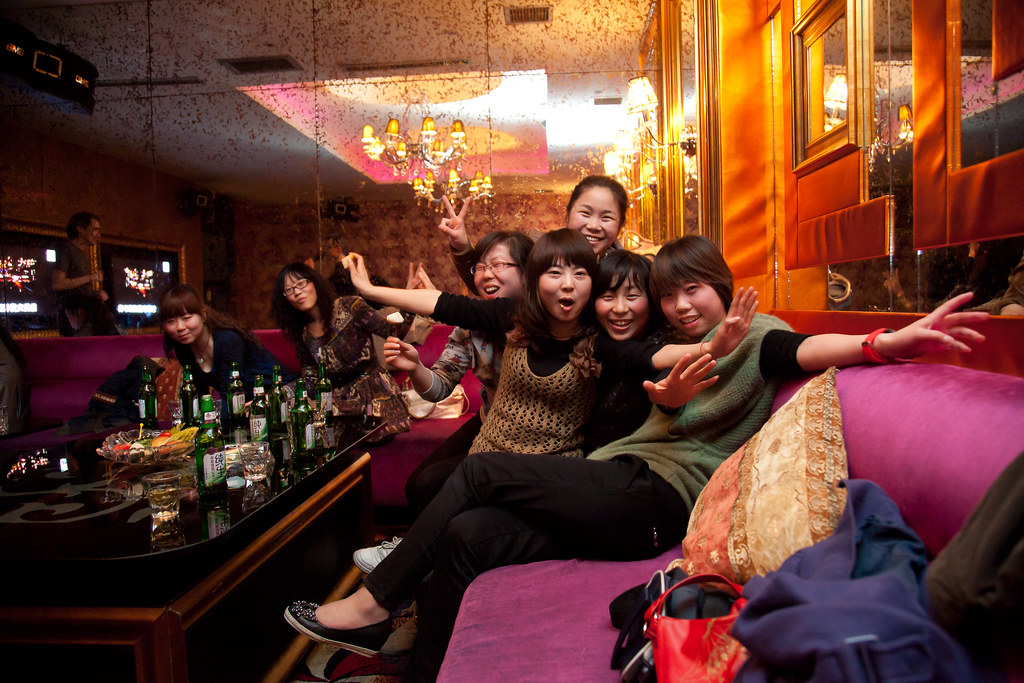
The CTs were enjoying themselves.
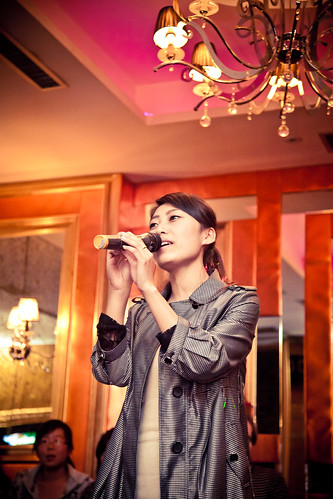
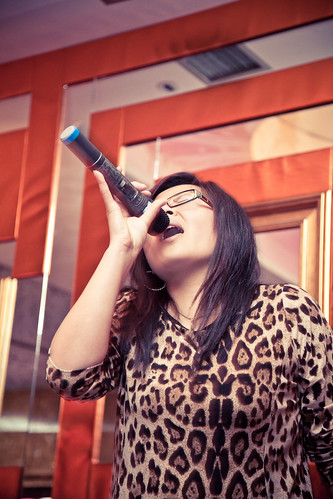
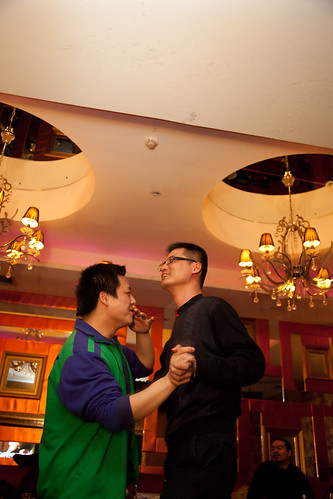
There were some very good singers amongst the CTs…and some not so good dancers.
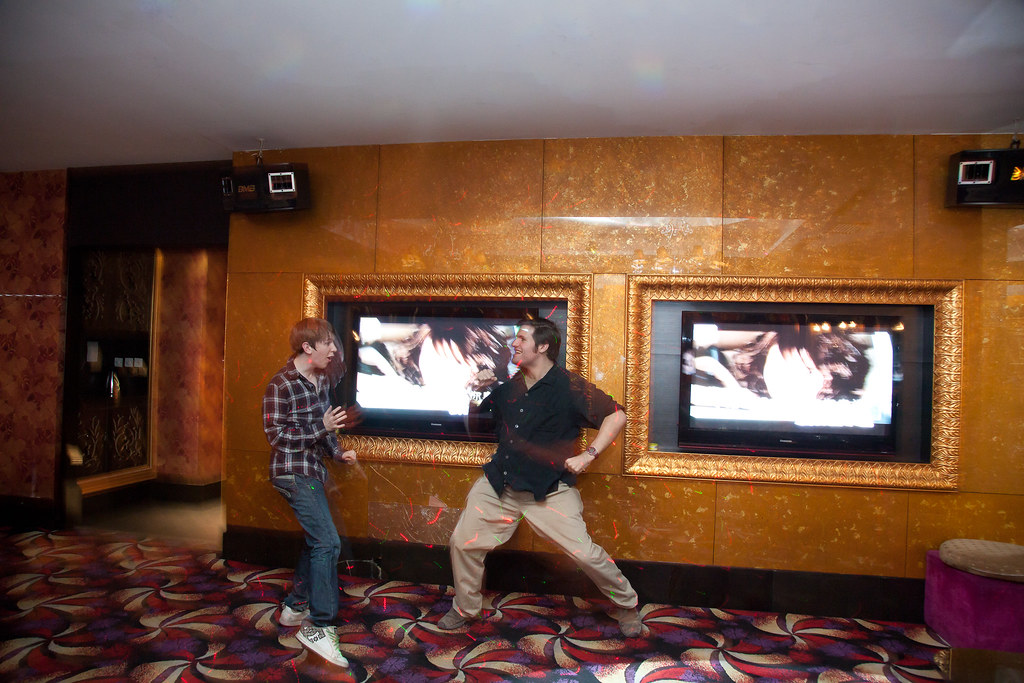
At this point me and John somehow fell into a dance-off. Someone grabbed my camera and decided to document the event.
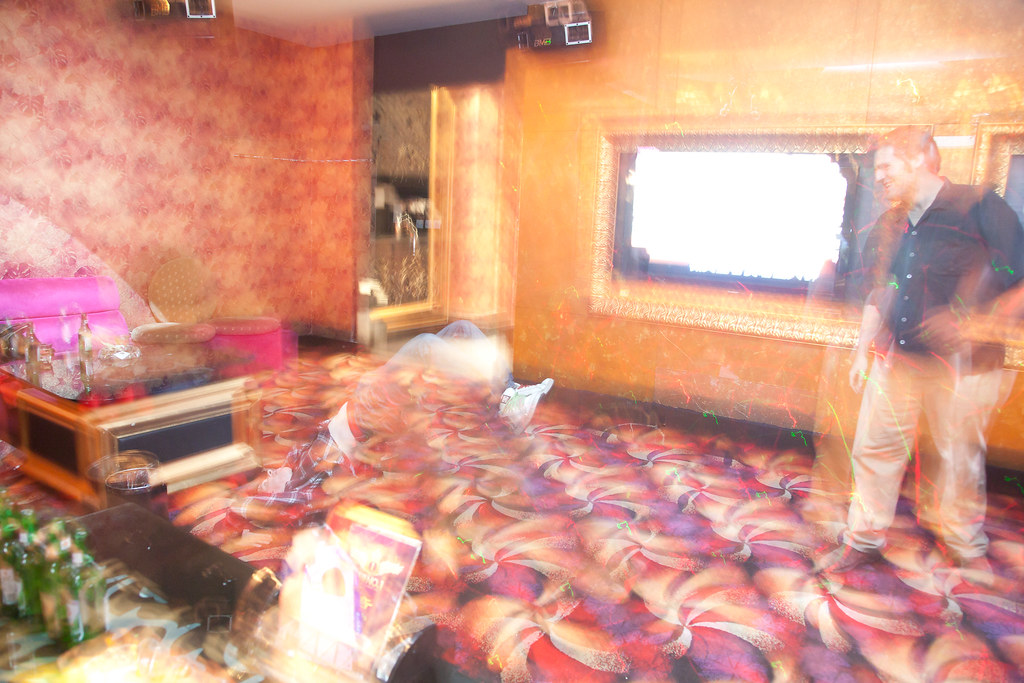
…and then some! I don’t know if John is standing back in defeat or in fear of my drunken kip-up.


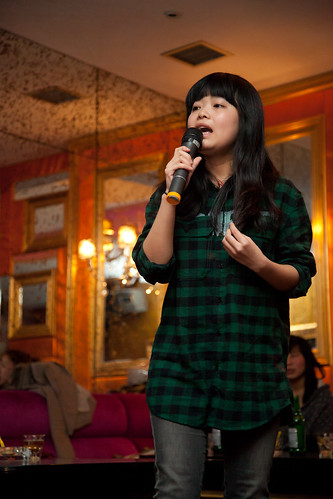
Exhausted, me and John let the others get back to singing.
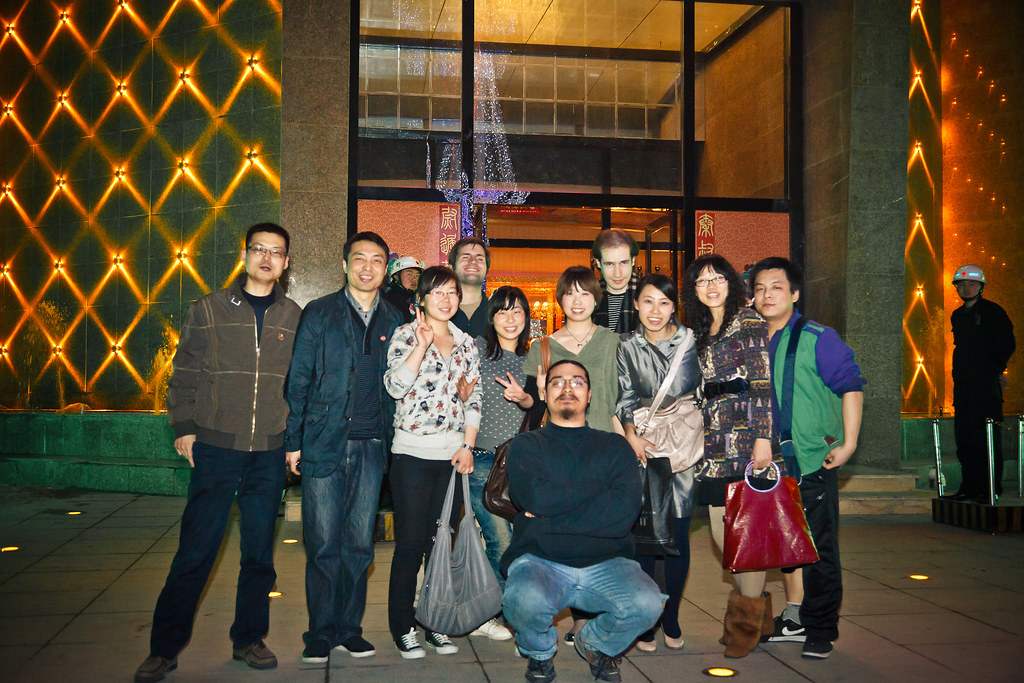
All in all a great night had by all. Good times.
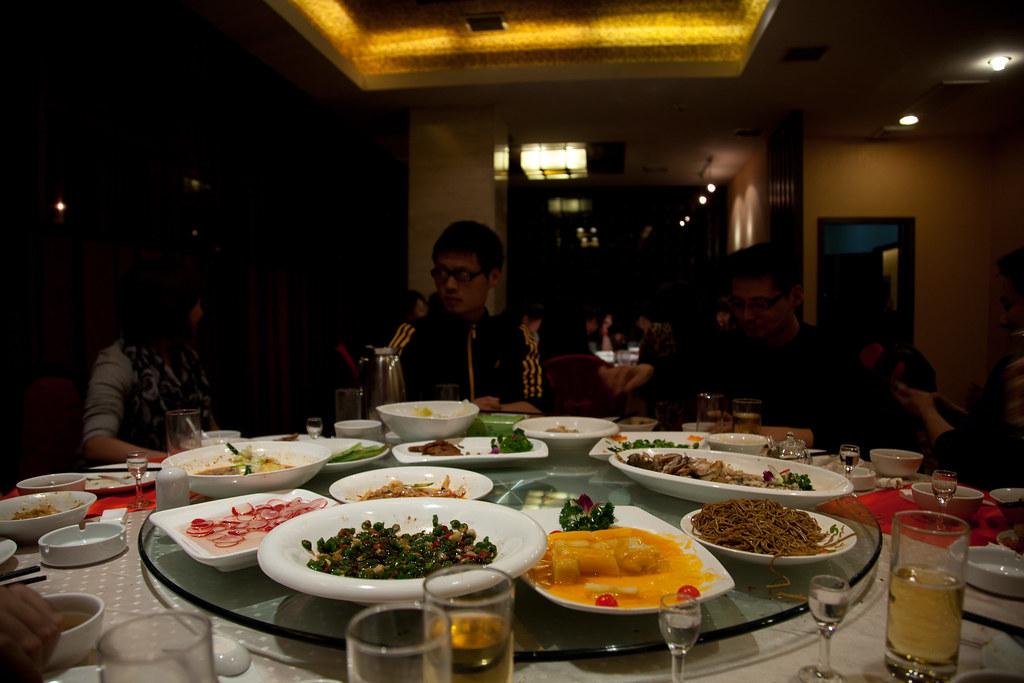
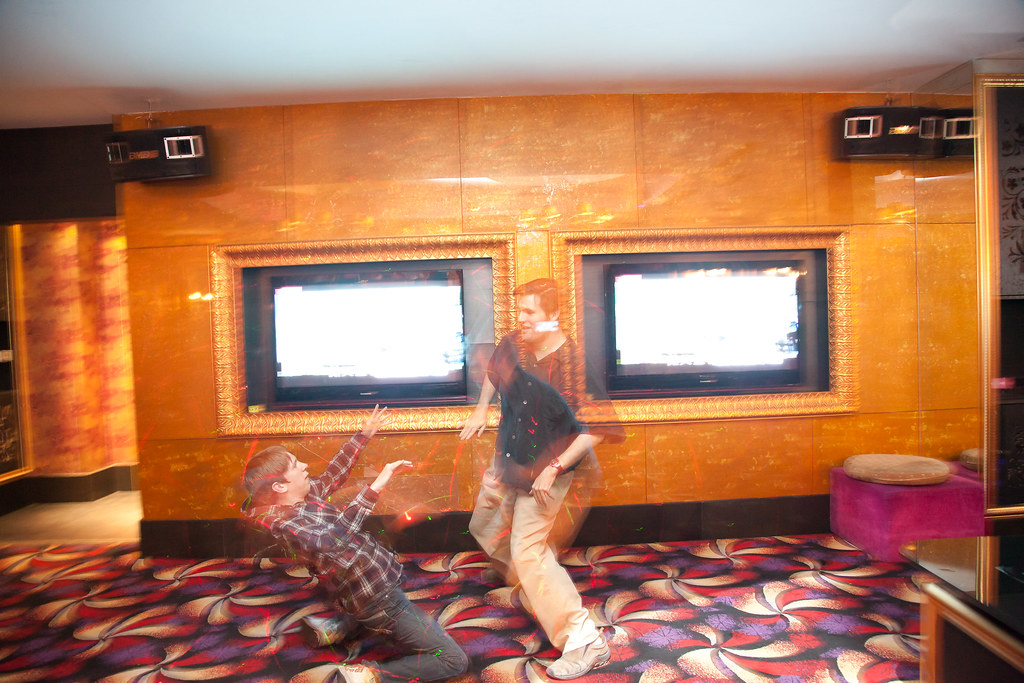
No Comments to “KTV – March 2011”
Please Wait
Leave a Reply